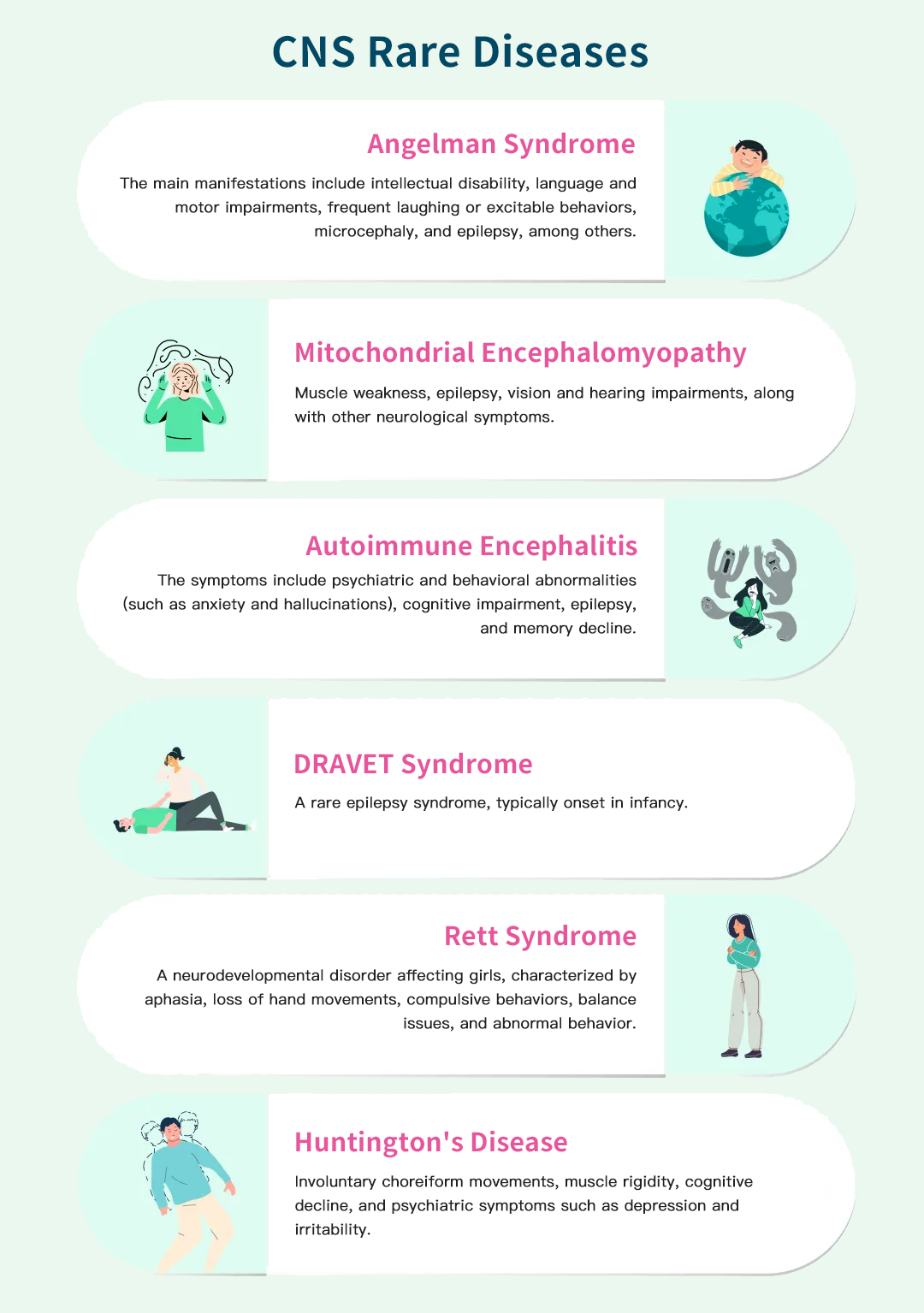Rare Disease Day | One in a Million, Yet Never Alone
February 28, 2025
18th International Rare Disease Day
More Than You Can Imagine
Not Just Rare
Although the global incidence of individual rare diseases ranges from 0.065% to 0.1%, the vast spectrum of over 7,000 conditions creates a striking reality: "Rare diseases are not that rare." Globally, the number of patients exceeds 300 million. In China, nearly 20 million people are affected, with the patient population growing at an annual rate of over 10%.

Huntington's Disease
Involuntary choreiform movements, muscle rigidity, cognitive decline, and psychiatric symptoms such as depression and irritability.
In recent years, global attention to rare diseases has surged, particularly within the realm of central nervous system (CNS) disorders. A number of groundbreaking drugs for neurological rare diseases, including multiple sclerosis (MS), amyotrophic lateral sclerosis (ALS), and Duchenne muscular dystrophy (DMD), have received regulatory approval, propelling the continued advancement of the CNS rare disease landscape.
Despite the enormous unmet clinical needs, the development of new CNS drugs remains fraught with challenges—high risk, extended timelines, and substantial financial commitments.
The application of artificial intelligence (AI) is emerging as a promising solution. However, the question of how to effectively harness AI to navigate and overcome these persistent obstacles is a critical issue that demands urgent attention in the ongoing pursuit of new CNS drugs.
Breaking the CNSR&DBottleneck
Clinical trials in the CNS space face no shortage of hurdles—especially in data capture, analysis, and drug supply chain management. The pathophysiology of CNS disorders is complex, biomarkers are missing, and subjective COAs dominate assessments, making data standardization and completeness a constant challenge.
When it comes to drug supply chain management, CNS drugs bring their own“chemical character”—demanding precise storage conditions like constant low temperatures or zero-light exposure. And stability and continuity are critical: any disruption can jeopardize trial timelines and outcomes.
AI Amplified–Smarter, Sharper, Stronger
Patients with CNS disorders often face cognitive or behavioral challenges. Traditional paper-based COAs fall flat, as they are prone to being affected by memory gaps and misinterpretation, leading to inconsistent or missing data.
With AI in the mix, eCOA becomes a digital powerhouse that enables real-time data capture, automated processing and analysis, and smart algorithms that flag anomalies and mitigate human error.
Interconnected and Seamless: Unmatched in Strength
The complexity of CNS diseases poses significant challenges for investigators in terms of data analysis and trend identification, making it difficult to extract valuable information to guide study.Traditional data tools just can’t keep up with dynamic, high-dimensional data—delaying critical decisions.
ACCMED provides standardized interfaces and data formats to seamlessly integrate multiple systems such as IRT, EDC, and eCOA, enabling unified data management and automated data flow. It allows real-time tracking of study developments, multidimensional data integration, and in-depth trend analysis. With intelligent identification of key indicators and potential risks, it helps avoid negative sdecisions—so powerful, it’s impossible not to be impressed!
Rare But Not Remote
It’s just one of us—randomly chosen.
Just happens to be a little different.
Caring about rare diseases
Means caring about everyone—you, me, and everyone in between.